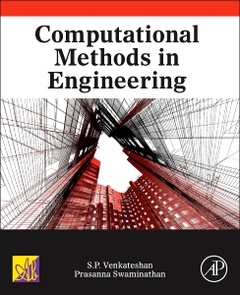Description
Computational Methods in Engineering
Authors: Venkateshan S.P., Swaminathan Prasanna
Language: English
Subject for Computational Methods in Engineering:
85.00 €
In Print (Delivery period: 14 days).
Add to cart692 p. · 19x23.3 cm · Hardback
Description
/li>Contents
/li>Biography
/li>Comment
/li>
Computational Methods in Engineering brings to light the numerous uses of numerical methods in engineering. It clearly explains the application of these methods mathematically and practically, emphasizing programming aspects when appropriate. By approaching the cross-disciplinary topic of numerical methods with a flexible approach, Computational Methods in Engineering encourages a well-rounded understanding of the subject.
This book's teaching goes beyond the text?detailed exercises (with solutions), real examples of numerical methods in real engineering practices, flowcharts, and MATLAB codes all help you learn the methods directly in the medium that suits you best.
- Preliminaries
- Solution of Linear Equations
- Computation of Eigenvalues
- Solution of Algebraic Equations
- Interpolation
- Interpolation in Two and Three Dimensions
- Regression or Curve Fitting
- Numerical Differentiation
- Numerical Integration
- Initial Value Problems
- Boundary Value Problems (ODE)
- Introduction to PDEs
- Laplace and Poisson Equations
- Advection and Diffusion Equations
- Wave Equations
- Beyond The Book - The Way Ahead
Prasanna Swaminathan is a research scholar at the Heat Transfer and Thermal Power Lab at IIT Madras.
- Balanced discussion of mathematical principles and engineering applications
- Detailed step-by-step exercises and practical engineering examples to help engineering students and other readers fully grasp the concepts
- Concepts are explained through flowcharts and simple MATLAB codes to help you develop additional programming skills

